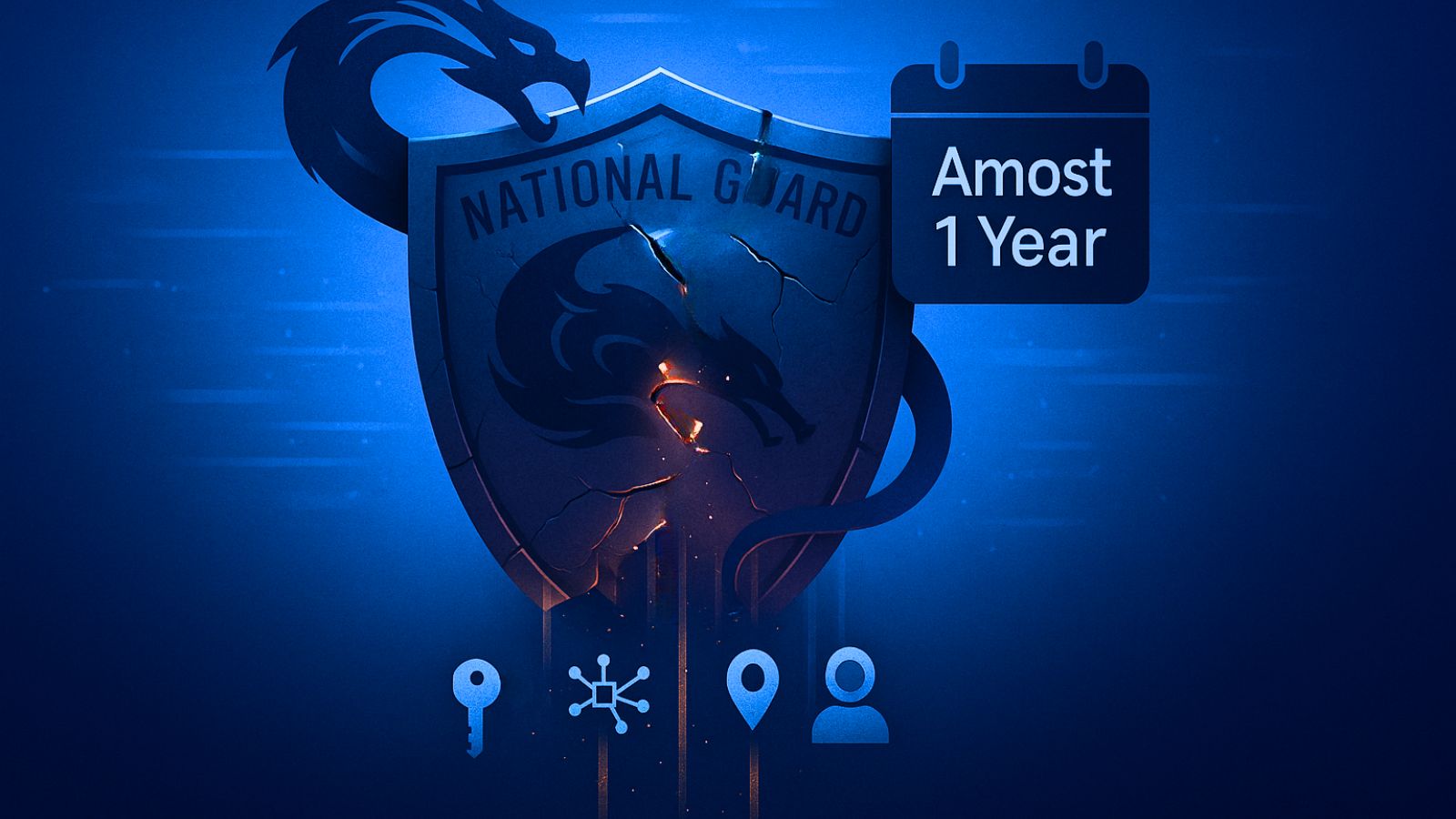
9 Best 4K Gaming Monitors in 2020
Running games at 4K is the ultimate goal for a modern gamer - and it has been for a few years now. Monitors have evolved much quicker than other computer parts in recent years, which is why it is still very difficult for most systems to handle games at 4K, even though the first monitors running at this resolution were introduced around seven years ago.
The main reason for this is the fact that 2160p is a massive jump from 1080p or 1440p in terms of pixel count. On top of this, game engines have gotten a lot more demanding in the meantime, especially with the introduction of DirectX 12, real-time ray tracing (thanks to Nvidia RTX), and other similar features.
Check: Best 1080p Monitors and Best 1440p Monitors
High refresh rates have become the norm since no PC gamer is going to be happy with 60Hz anymore, which makes matters worse. However, we didn’t even have inputs capable of handling more than 60Hz at 2160p until not long ago, which is why we also had to wait for DisplayPort 1.4 and HDMI 2.0 to be developed.
So, you might be wondering if 2020 is finally the year when we can enjoy games in 4K without any compromises. As it turns out, the answer to this is maybe. In short, current hardware is definitely powerful enough to handle 4K@60Hz, but not quite powerful enough to allow for more than that when it comes to triple-A games.
So why “maybe”? Well, it all depends on what the next generation of Nvidia GPUs is going to offer. The 3xxx series is expected to be released sometime this autumn. Considering the fact that this is most likely not going to be another refresh, we should see a considerable performance improvement across the board.
Intel has also recently released its 10th gen CPUs, with AMD expected to do the same in a couple of months. Once all this new hardware is finally going to be paired together, we just might be able to consistently exceed 60 FPS at 2160p.
Should You Buy a 4K Gaming Monitor Now?
We’re inclined to say yes, but there are some variables you need to consider first. The most important one is the fact that a high refresh rate 4K monitor is still costly and quite difficult to get. There are only a handful of models on the market that offer more than 60Hz, and they usually cost an arm and a leg.
If you are not interested in getting more than 60 FPS, then yes, it is a pretty good time to get yourself a 4K monitor. The prices have gone down significantly, which means that you can find 2160p monitors in every price bracket. The technology is also mature enough at this point, so you are not taking any chances in terms of reliability.
What to Look For in a 4K Gaming Monitor?
Since this is the pinnacle of monitor technology at the moment, you should expect nothing but the best when it comes to additional features. They include things like HDR, variable refresh rate capabilities, high refresh rate, generous input settings, amazing colors, and some quality-of-life features as well, such as good adjustability with the included stand.
Naturally, all of these features cost a pretty penny if you want them all part of the same package, so it’s really up to your budget. The goal is to get as many of them as you can afford, focusing on the ones you want the most.
Here are some other things to consider while buying a 4K gaming monitor:
- Display size: 4K means a lot of pixels, and it’s actually pretty difficult to run into pixel density issues at this resolution. Not only that, but the Windows UI has to be upscaled in most cases. Otherwise, you won’t be able to make proper use of your computer, and you might hurt your eyes. Even 27 inches can be a bit too small, so we recommend something that’s at least 32”.
- HDR capabilities: Unlike 1080p and 1440p monitors, these displays have no excuse for delivering poor HDR performance. Hence, we recommend something with at least 600 nits of peak brightness, since that’s pretty much the absolute minimum for a proper HDR experience.
- Variable refresh rate (G-Sync/FreeSync): This is a delicate matter. Most low and medium tier 4K displays are capped at 60Hz, which means that VRR does not make much sense. However, if you want something with more than 60Hz, then something like G-Sync is almost necessary, given that you probably won’t be able to hit 120 or 144 FPS in most games.
- USB and audio ports: Connectivity is important nowadays, and every monitor should come with a USB hub and an audio jack. No one wants to fumble around the back of the PC case just to plug in a flash drive.
The Best 4K Gaming Monitors in 2020
We tried to cover every budget with this list, but we are also trying to show you what peak performance looks like. Hence, the top spots in the list are reserved for what we consider the best of the best in terms of features, with absolutely no compromises.
With all that out of the way, it’s time to unveil our picks for the best 4K gaming monitors in 2020.
1. Asus ROG Swift PG65UQ 65”
- Display Type: LED
- Item Weight: 81.13 lbs
- Panel Type and Size: 65", VA
- Refresh Rate: 144Hz
- Response Time: 4ms
- Inputs: DisplayPort, HDMI
- Dimensions (W x H x D): 57.01 x 37.28 x 15.35 inches
This is it, folks - the best gaming monitor currently on the market, bar none. And yes, that’s no typo; this really is a 65” monitor. That’s bigger than most TVs, so you might have a hard time fitting this on your desk, not to mention the fact that you have to sit like six feet away for the entire display to fit into your field of vision.
Asus calls this type of monitor a BFGD, which stands for Big Format Gaming Display. Its size allowed the manufacturer to include pretty much everything you could wish for in a monitor, and there’s really nothing that’s missing in terms of features.
As such, you can reach up to 144Hz at 2160p, while also taking advantage of G-Sync Ultimate. The 1000 nits of peak brightness also allow you to experience HDR at its best, especially since this display comes with a Vesa DisplayHDR 1000 certification.
Thanks to the Quantum Dot technology, the monitor is also capable of offering 95% coverage of the DCI-P3 color gamut, which is on par with many high-end TVs. The panel itself is VA, which means that you also get incredibly deep blacks and very good contrast.
In terms of connectivity, there are four HDMI 2.0 ports, one DisplayPort 1.4 port, a SPDIF audio output, as well as two USB 3.0 ports. It’s also worth noting that the HDMI 2.0 ports allow you to take advantage of variable refresh rate technologies on consoles as well, which is not something many TVs can offer.
Speaking of which, this monitor can double as your TV as well, because it’s big enough to offer a great viewing experience even from across the room. You won’t be able to connect any TV-specific cables to it, such a coaxial, but there’s really no need for that if you have a Netflix subscription.
Pros:
- 144Hz 4K gaming
- G-Sync Ultimate support
- DisplayHDR 1000 certification, with 1000 nits of peak brightness
- 65” inches of screen real estate at your disposal
- Comes with two built-in 15W speakers and a remote
- Supports VRR on consoles as well
- Many input options
- Exquisite image quality, thanks to the Quantum Dot display
Cons:
- Maybe a bit too big for a desk?
- Costs more than a high-end gaming PC
2. ASUS ROG Swift PG43UQ 43”
- Display Type: LED
- Item Weight: 49.90 lbs
- Panel Type and Size: 43", VA
- Refresh Rate: 144Hz
- Response Time: 1ms
- Inputs: DisplayPort, HDMI
- Dimensions (W x H x D): 38.37 x 24.85 x 9.54 inches
If you are not made of money or just don’t want to deal with the issues that come with having a 65” monitor, the 43” version might be the better choice. In essence, you are getting more or less the same features, except at a much lower price.
You are not giving up the 144Hz refresh rate, nor the DisplayHDR 1000 certification, which is actually a terrific deal when you take a look at the price difference between this display and the 65” model. On top of that, you still get G-Sync compatibility, although it’s not G-Sync Ultimate. Still, it’s highly unlikely that you will require more than 100 FPS on 2160p anyway, so it’s not a major loss.
The response time sits at a very low 1ms as well, which is pretty much the best you can expect nowadays, at least on a non-TN panel. This allows you to avoid motion blur and other visual artifacts, which are a bit more obvious when the screen is this massive.
Connectivity-wise, you can take advantage of two DisplayPort 1.4 and two HDMI 2.0 ports, which allow you to use the monitor with both a PC and a console. You also get a couple of USB ports, plus two integrated speakers that can output 10W at their peak. In addition, the remote is included with this model as well, so you do not have to fumble around with the buttons on the back of the display in order to change presets or adjust various settings.
Pros:
- Very large display, but not too big for a desk in most cases
- 144Hz refresh rate at 2160p
- 1ms response time, which eliminates motion blur
- G-Sync compatibility
- Hefty input options
- Comes with built-in speakers and a remote
- DisplayHDR 1000 certification
Cons:
- Still pretty expensive for the average gamer
3. Acer Predator CG437K 43"
- Display type: LED
- Item Weight: 51.90 lbs
- Panel Type and Size: 43", VA
- Refresh Rate: 144Hz
- Response Time: 1ms
- Inputs: DisplayPort, HDMI
- Dimensions (W x H x D): 38.53 x 10.41 x 26.46 inches
Although Asus seems to be running the show when it comes to high-end gaming monitors, Acer is not that far behind either. The CG437K sports a 43” diagonal as well, which means it technically classifies as a BFGM. As such, you can definitely use it as a console monitor and place it in your living room, at least if you do not want to give up too much of your desk.
The specs are very similar to the Asus as well since you get 144Hz, G-Sync compatibility, and DisplayHDR 1000 certification. This is pretty much the holy trifecta if you are a monitor snob, although it would be nice to see G-Sync ultimate on this list as well. As mentioned before, however, G-Sync Ultimate is not that useful on 4K monitors yet.
One thing Acer is really proud of is that they managed to get a sub 1 Delta e when it comes to color accuracy, which is very impressive. Furthermore, the panel also achieves a 90% coverage of the DCI-P3 color space. In theory, photography enthusiasts can also get their work done on this monitor, which is a nice bonus if that happens to be your hobby.
Lastly, the input options are on par with what you would expect: two DisplayPort 1.4 ports, 3 HDMI 2.0 ports, as well as an audio out and four total USB ports, two of which are 3.0. The display also comes with a remote and two 10W speakers.
Pros:
- Great size for a 4K monitor
- 144Hz refresh rate
- 1ms response time
- G-Sync compatible
- DisplayHDR 1000 certification
- Great color fidelity
- Comes with RGB lighting on the back
- Includes both HDMI 2.0 and DisplayPort 1.4
Cons:
- The included stand occupies a good portion of your desk
4. Acer Predator X27 27”
- Display type: LED
- Item Weight: 32.50 lbs
- Panel Type and Size: 27", IPS
- Refresh Rate: 144Hz
- Response Time: 4ms
- Inputs: DisplayPort, HDMI
- Dimensions (W x H x D): 24.76 x 11.37 x 22.65 inches
The Predator X27 is designed to be a high-end alternative for people who are not interested in big format displays but still want all the goodies that come with spending a lot of money on a top-tier monitor.
Hence, you can achieve 144Hz in OC mode, although the display can also be used at 120Hz if you are having trouble maintaining that refresh rate for some reason. On top of that, it also comes with a DisplayHDR 1000 certification, meaning that it is capable of 1000 nits of peak brightness. - which should really make your games and movies pop.
G-Sync Ultimate is part of the package as well, and it’s actually a bit surprising to see this feature in such a “cheap” monitor. However, the 4ms of input lag are expected, especially since the monitor uses an IPS panel. Granted, you get better colors in return, which is not a bad deal at all, especially since you probably won’t care about the difference between 1 and 4ms.
The 27 inches diagonal to work with is either an advantage or a downside, depending on your needs. You will definitely have to make use of your operating system’s scaling tools to adjust the UI, but the upside is that you get to enjoy an incredibly high pixel density, which translates into extremely sharp images.
Lastly, the monitor can be used with DisplayPort 1.4 or HDMI 2.0, and you also get four USB 3.0 ports at your disposal. The included stand is not bad either, but it’s not nearly as good as it should be when you consider the price.
Pros:
- 144Hz refresh rate
- G-Sync Ultimate support
- DisplayHDR 1000 certification
- 10-bit color space support
- Great color accuracy
- Decent input options
Cons:
- The stand is not very adjustable
- A bit too small for 2160p
5. Asus ROG Swift PG27UQ 27”
- Display type: LED
- Item Weight: 20.30 lbs
- Panel Type and Size: 27", IPS
- Refresh Rate: 144Hz
- Response Time: 4ms
- Inputs: DisplayPort, HDMI
- Dimensions (W x H x D): 25.00 x 3.70 x 15.00 inches
Just like the Acer found a bit higher on this list, the Asus ROG Swift PG27UQ is designed to appeal to gamers who have no use for big displays and prefer something a bit more manageable. The reason the Asus is lower on the list is that there is no G-Sync Ultimate support on this monitor, which is pretty much the only difference between it and the Predator X27.
As such, you get 144Hz and 4ms GtG response time, which is extremely good for a 4K display. Not only that, but it has also fully supported HDR thanks to the DisplayHDR 1000 certification. It means that the monitor can output 1000 nits of peak brightness, which is enough to cause you to squint during bright scenes.
While there is no G-Sync Ultimate, G-Sync is still supported, which means you can definitely experience smoother gameplay if your frame rates cannot quite match the monitor’s refresh rate. In addition, the Quantum Dot IPS panel is incredibly well-calibrated, and it is also capable of covering 97% of the DCI-P3 color space.
As far as inputs are concerned, there is one DisplayPort 1.4 and one HDMI 2.0, as well as a headphone jack and two USB 3.0 ports. The stand is very adjustable, especially since you can even turn the monitor 90 degrees and use it in portrait mode.
Pros:
- 144Hz refresh rate
- DisplayHDR 1000 certification
- G-Sync support
- 10-bit color
- Very adjustable stand
- Great color accuracy
Cons:
- The 27” diagonal can be an issue in terms of UI scaling
- Not that many USB ports
6. Asus ROG Strix XG438Q 43”
- Display type: LCD
- Item Weight: 45.00 lbs
- Panel Type and Size: 43", VA
- Refresh Rate: 120Hz
- Response Time: 4ms
- Inputs: DisplayPort, HDMI
- Dimensions (W x H x D): 38.37 x 24.85 x 9.54 inches
We know what you are thinking: Another Asus 43” model? Yes, and there’s a good reason for this. In short, this is the “budget” option for people who want a big format gaming display but are not prepared to spend more than $1,500. At the same time, you are still getting some of the high-end features, such as the high refresh rate.
Unlike the more expensive model, this one only supports up to 120Hz at 2160p, but that’s plenty for most gamers anyway. In addition, you also get a DisplayHDR 600 certification instead, which means that HDR content won’t pop quite as much. Even so, 600 nits of peak brightness should be enough at least to see a difference when turning on HDR in games.
The other compromise is the lack of G-Sync support, although you get FreeSync instead, which can be just as useful if you have an AMD GPU. However, you also have to work with a 4ms response time instead of 1ms, which is pretty significant on paper. In real life, however, the difference is probably not going to be noticeable.
You also get only one DisplayPort 1.4 instead of two, but at least you get three HDMI 2.0 ports, so that’s not so bad. Two 10W speakers are included, as well as a remote control and two USB 3.0 ports for your peripherals.
Pros:
- Lots of screen real estate for the price
- 120Hz is still very respectable at 2160p
- FreeSync support, which is better than nothing
- The HDR is pretty decent
- Comes with a remote and built-in speakers
- Features USB and audio inputs
Cons:
- Only one DisplayPort input
- 4ms response time
7. Acer Predator XB321HK 32”
- Display type: LED
- Item Weight: 24.90 lbs
- Panel Type and Size: 32", IPS
- Refresh Rate: 60Hz
- Response Time: 4ms
- Inputs: DisplayPort, HDMI
- Dimensions (W x H x D): 29.05 x 12.20 x 22.91 inches
Acer makes another appearance on our list, but this time with a more affordable model that targets gamers with a medium budget. Hence, you can forget about HDR or 10-bit color support, since this monitor is intended to be the bare minimum in terms of specs and performance.
The bad news is that you are stuck with 60Hz, which means that you won’t enjoy the smoothness of higher frame rates if you can achieve them. Thankfully, at least the 32” diagonal is big enough not to run into major UI scaling issues, although you will probably still have to tweak a few things here and there.
The good news is that you at least get support for Nvidia G-Sync, which is always nice to see. It’s a bit difficult to justify G-Sync on a 60Hz panel, but given how difficult it is to achieve 60 FPS in 4K, we can assume that you will get a bit of use out of the adaptive refresh rate technology. In addition, the IPS panel is also rated for a 4ms response time, which is very respectable.
In terms of input, you can use either HDMI or DisplayPort, and there are also four USB 3.0 ports at your disposal. While this sounds great, there is no audio jack for your headphones, which is a bit of a bummer. The monitor does come with two 2W speakers, but they are not designed to be used as your main source of audio output, that’s for sure.
Pros:
- Supports G-Sync, which is the main selling point
- 4ms response time
- IPS panel and great colors
- Good size for a 4K monitor
- Plenty of USB ports
Cons:
- No audio jack
- Limited adjustability with the included stand
- Only 60Hz
8. ViewSonic XG3220 32”
- Display Type: LCD
- Item Weight: 18.20 lbs
- Panel Type and Size: 32", TN
- Refresh Rate: 60Hz
- Response Time: 5ms
- Inputs: DisplayPort, HDMI
- Dimensions (W x H x D): 10.3 x 28.6 x 18.1 inches
The ViewSonic XG3220 is a budget 4K monitor that aims to provide you with decent image quality and the bare minimum in terms of HDR support. Hence, while it’s not the cheapest 2160p monitor on the market, it’s still far less expensive than most of the other displays on our list, and it still manages to offer some great features.
First, the 32” diagonal makes this a perfect fit for 4K, especially since it helps a bit with the UI scaling in Windows as well. The pixel density is also quite decent, so you are not sacrificing any sharpness.
After that, it’s also worth pointing out that the monitor comes with AMD FreeSync support, which is definitely a plus, even though it probably won’t make a big difference at only 60Hz. Even so, maintaining a steady 60 FPS at 2160p is no easy task, and since this is aimed at budget gamers who are probably not sporting the latest hardware, VRR is definitely a good addition.
You can connect the monitor using either HDMI 2.0 or DisplayPort 1.2, both of which are perfectly capable of handling 2160p@60Hz. Since HDR-10 content is also supported, you get the 10-bit color as well.
Pros:
- Good contrast ratio, thanks to the VA panel
- 10-bit color support
- AMD FreeSync support
- Works with both DisplayPort and HDMI
- 4 USB ports
- Supports HDR-10 content
Cons:
- Limited to 60Hz
- 5ms response time
- Limited stand adjustability
9. VIOTEK NV32Q 32”
- Display Type: LED
- Item Weight: 9.48 lbs
- Panel Type and Size: 32", TN
- Refresh Rate: 60Hz
- Response Time: 8ms (4ms in OD)
- Inputs: DisplayPort, HDMI
- Dimensions (W x H x D): 31.75 x 21 x 6.75 inches
If your goal is to get the cheapest possible 4K monitor, then the VIOTEK NV32Q is probably your best bet. It’s not flashy when it comes to specs, but it is the only curved display on this list, so at least it looks cool. In addition, the manufacturers also claim that the monitor is G-Sync-compatible, although your results may vary in this regard.
First off, you are obviously stuck with 60Hz at this price, at it really shouldn’t be surprising. The good part is that you at least get 32” inches of screen real estate, which is not bad at all, especially when you consider that it uses a curved panel. Coupled with the monitor’s decent size, this aspect should really help with immersion.
The response time is rated for 8ms, although you can also achieve 4ms with pixel overdrive. Keep in mind that this usually introduces quite severe ghosting artifacts most of the time, so you are probably better off sticking with 8ms instead.
While the display is rated for 300 nits, it also comes with an “HDR400-ready” sticker. This is pretty much useless, as we have already explained before. Even so, the VA panel is quite good in terms of color accuracy and contrast.
As far as the stand is concerned, there’s nothing you can adjust about it except for the tilt. If that’s an issue for you, it’s possible to avoid this by using the standard VESA mount found on the back of the monitor.
Pros:
- Very affordable for a 4K monitor
- Curved display, which helps with immersion
- Decent panel quality
- Supports FreeSync
- HDR can be enabled, even if it doesn’t help much
- Supports HDMI 2.0 and DisplayPort 1.4
Cons:
- Only 60Hz
- 8ms response time without pixel overdrive
- The stand is very cheap and not very adjustable
Conclusion
There’s no denying that 4K monitors will only increase in popularity in the years to come, especially since GPUs are going to get better and better. Thus, even if you are not able to make the most out of a high refresh rate display now, it’s still worth the investment if you are planning to upgrade your rig in the future.
Moreover, 4K monitors are not as expensive as they used to be, at least if you are not looking for the best specs. You can even get one for under $500, which would have been impossible just a few short years ago.
Naturally, 8K is now on the horizon, and some prototypes are out on the market already. Those are definitely not worth it at the moment, but it’s good to know that they are coming, if only because prices will drop even more for 2160p displays.
FAQ
Here are some answers to a few questions you may have regarding 4K gaming monitors.
What's the Difference Between 4K and UHD?
The difference applies to the cinema industry only, not to gaming monitors. In cinema, 4K means a resolution of exactly 4096x2160, while UHD (Ultra HD) means 3840x2160. Keep in mind that gaming monitors are advertised as being 4K in most cases, even though they are actually UHD. So as far as gaming monitors are concerned, there's no difference between 4K and UHD.
Can Current-Gen GPUs Handle More Than 60 FPS in Triple-A Games?
In some cases, yes. You do need a beast of a rig to achieve that, so it's not really something the average gamer can do. On the other hand, a monitor is a long-term investment, and we are already expecting better hardware in 2020 that should be capable of pushing the limits and also make full use of high refresh rate 4K displays.
What's the Difference Between Different DisplayHDR Certifications?
In short, both sustained and peak brightness are tested to receive a VESA DisplayHDR certification. To receive a DisplayHDR 600 certification, for example, the monitor in question has to be able to output at least 600 cd/m2. In addition, DisplayHDR 600 monitors and above also have to offer 10-bit color. It's definitely not an easy test to pass, which is why very few manufacturers go through the trouble of obtaining a certification.











